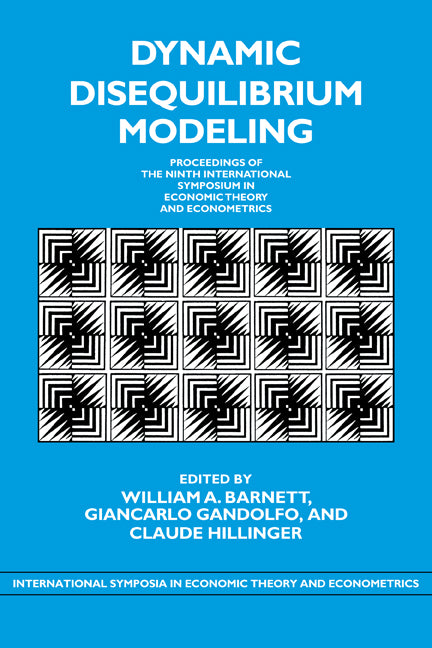Freshly Printed - allow 8 days lead
Couldn't load pickup availability
Dynamic Disequilibrium Modeling: Theory and Applications
Proceedings of the Ninth International Symposium in Economic Theory and Econometrics
This book presents some surveys and developments in dynamic disequilibrium and continuous time econometric modeling along with related research from associated fields.
William A. Barnett (Edited by), Giancarlo Gandolfo (Edited by), Claude Hillinger (Edited by)
9780521174978, Cambridge University Press
Paperback, published 3 March 2011
552 pages
22.9 x 15.2 x 3.1 cm, 0.8 kg
Review of the hardback: 'For researchers interested in dynamic modelling, this volume has much to recommend it …'. Marcus J. Chambers, The Economic Journal
First published in 1996, Dynamic Disequilibrium Modeling presents some surveys and developments in dynamic disequilibrium and continuous time econometric modeling along with related research from associated fields. Specific areas covered include applications in business cycles and growth, tests for nonlinearity, rationing and disequilibrium dynamics, and demographic and international applications. The contents of this volume comprise the proceedings of the ninth conference in The International Symposia in Economic Theory and Econometrics series under the general editorship of William Barnett. The proceedings volume includes the most important papers presented at a conference held at the University of Munich on August 31-September 4, 1993.
Volume editors' preface
Series editor's preface
List of contributors
Part I. Survey Papers: 1. Survey of continuous time econometrics A. R. Bergstrom
2. Dynamic disequilibrium economics: history, conceptual foundations, possible futures Claude Hillinger
3. The role of continuous time disequilibrium models in macroeconomics Clifford R. Wymer
Part II. Continuous Time Models: 4. Nonlinear estimation of a nonlinear continuous time model Giancarlo Gandolfo, Pier Carlo Padoan, Giuseppe De Arcangelis and Clifford R. Wymer
5. Endogenous regime switching in a model of accumulation, credit and monetary policy D. Delli Gatti, M. Gallegati and P. C. Padoan
6. A note on continuous time dynamic disequilibrium macroeconometric modeling of the United Kingdom K. B. Nowman
7. Evaluation of discrete and continuous time dynamic models by spectral methods with an application to automobile demand Michael Reiter
8. A continuous-time method for modeling optimal investment subject to adjustment costs and gestation lags Peter A. Zadrozny
Part III. Business Cycles and Growth: 9. Monopolistic price setting, subjective demand, and the business cycle Alfred Mauszner
10. The G7-countries: a multivariate description of the business cycle stylized facts Ulrich Woitek
Part IV. Tests for Nonlinearity: 11. Comparison of the available tests for nonlinearity and chaos William Barnett, A. Ronald Gallant, Melvin Hinich, Mark Jensen and Jochen Jungeilges
12. Testing for nonlinearity in the exchange rate data series: an empirical investigation of the Lira/$ spot rate Laura Sabani
Part V. Rationing and Disequilibrium Dynamics: 13. Dynamic stochastic choice modeling of disequilibrium in an economy B. Dejon, F. Graef, H.-J. Meier and J. Novotny
14. Non-linear models of employment adjustment Werner Smolny
15. A simulation study of disequilibrium price dynamics Claus Weddepohl
Part VI. Demographic and International Applications: 16. Disequilibrium in the Canadian population distribution, 1952–83 William P. Anderson and Yorgos Y. Papageorgiou
17. Optimality of the target-zone regime Giuseppe De Arcangelis
18. Neighborhood feedbacks, endogenous stratification, and income inequality Steven N. Durlauf.
Subject Areas: Econometrics [KCH]


